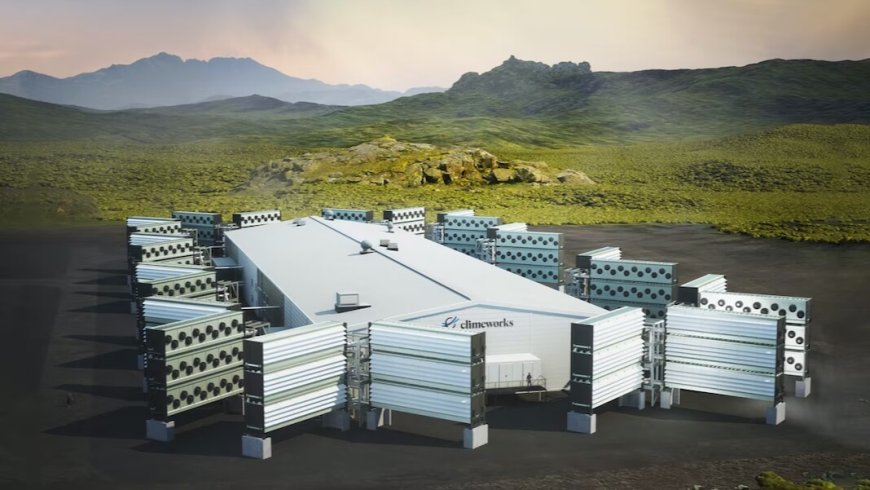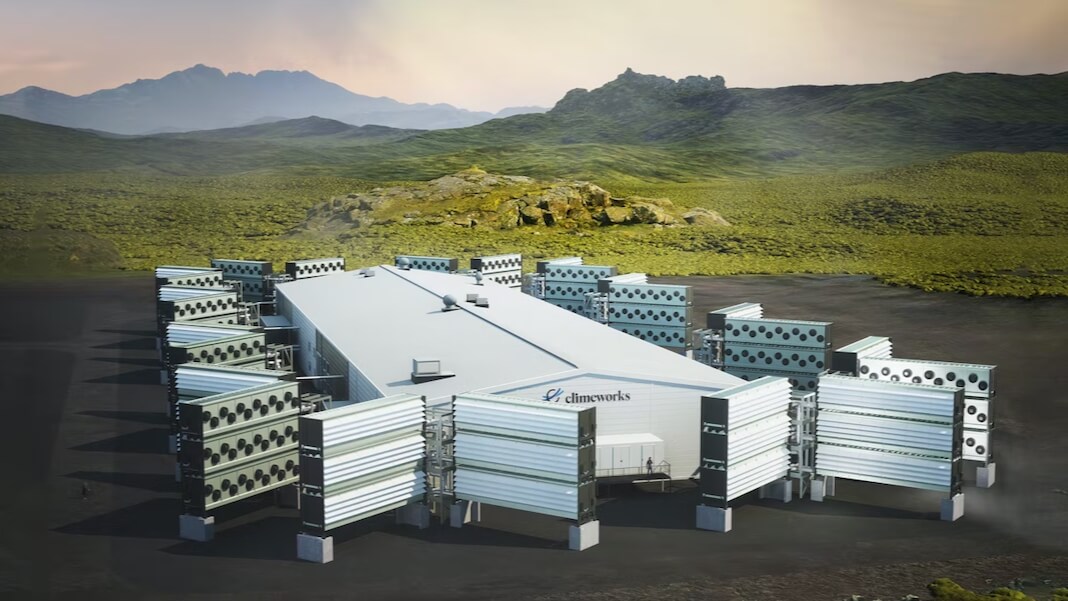US Invests $1.2 Billion in Carbon Capture Plants to Suck Tons of CO2 From the Air
US Invests $1.2 Billion in Carbon Capture Plants to Suck Tons of ... Singularity Hub

Pulling CO2 from the Atmosphere: US Government Invests $1.2 Billion in Direct Air Capture Technology

Introduction
Pulling large amounts of carbon dioxide (CO2) out of the atmosphere is likely to be a crucial part of efforts to tackle climate change. A new $1.2 billion investment by the US government in two large-scale facilities could help jumpstart the technology.
The Need for Carbon Removal
While there is strong consensus that rapidly reducing carbon emissions will be essential if we want to avoid the worst impacts of climate change, there’s growing recognition that this isn’t happening fast enough to hit present targets. As a result, it seems increasingly likely that we’ll have to find ways to remove CO2 from the atmosphere later this century.
The Role of Direct Air Capture (DAC) Technology
While various nature-based solutions exist, including reforestation and locking up carbon in soil, direct air capture (DAC) technology that pulls CO2 out of the air could be a crucial tool. The technology is in its infancy though and currently costs a huge amount of money to remove very little carbon from the atmosphere.
The US Government’s Investment
The US government hopes to change that with the announcement of $1.2 billion in funding to build two plants capable of removing up to a million tons of CO2 a year in Texas and Louisiana. The hope is that building facilities at a much larger scale than shown in previous demonstrations will help prove the feasibility of the technology and cut costs.
“Cutting back on our carbon emissions alone won’t reverse the growing impacts of climate change; we also need to remove the CO2 that we’ve already put in the atmosphere,” US Secretary of Energy Jennifer Granholm said in a statement announcing the investment.
The Future of Direct Air Capture
The plants will be the first of four direct air capture (DAC) demonstrators due to be built over the next decade using money from last year’s bipartisan infrastructure law. The agency says each facility will eventually remove more than 250 times more CO2 than the largest existing DAC plant, which is based in Iceland.
Both will rely on massive arrays of fans to suck air over special materials that selectively remove CO2. The materials are then heated to liberate the captured CO2 in preparation for further processing and storage deep underground (though in the future it may be possible to repurpose the gas into things like cement or sustainable aviation fuels).
The Louisiana project is a collaboration between non-profit technology company Batelle and DAC technology providers Climeworks Corporation and Heirloom Carbon Technologies, while the Texas plant will be built by Occidental Petroleum using technology from Carbon Engineering.
Mixed Reactions
The announcement has drawn mixed reactions. Some experts have praised the investment as crucial for kick-starting commercialization of an important climate technology, but others have suggested the money could be better spent on other carbon reduction efforts.
It can cost more than $1,000 to remove each ton of CO2 using current DAC technology. It also requires large amounts of electricity to run fans and heat the CO2-absorbing materials, which diverts renewable power that could otherwise be displacing energy produced using fossil fuels.
Proponents have made rosy predictions about how quickly these costs and energy requirements could come down. But Robert Howarth, a biogeochemist at Cornell University, told Science that the low concentration of CO2 in the air means the physics of removing it is fundamentally challenging and doubts it will see the same rapid improvements as other climate technologies like solar panels.
Another concern is that the promise of the technology could act as an excuse for fossil fuel companies to continue extraction for decades to come, Jonathan Foley, executive director of climate group Project Drawdown, told the Associated Press. “What worries me and a lot of other climate scientists is that it potentially creates a fig leaf for the fossil fuel industry,” he said.
Occidental, which will operate the Texas plant, has been quite explicit on this front. Occidental CEO Vicki Hollub told the Wall Street Journal earlier this year that it plans to build 135 DAC plants to help it reach net-zero emissions by 2050 while still investing heavily in oil extraction.
Nonetheless, others say that the scale of the climate challenge means that DAC is going to be a crucial tool and work needs to start now if it is to be ready by the time we need it. “In order to have direct air capture ready at the scale we need it by 2050, we need to invest in it today,” climate researcher Claire Nelson, from Columbia University, told the Associated Press.
Global Efforts
The US is also not the only government focusing on this area. The United Kingdom recently announced £20 billion in funding over the next two decades for carbon capture storage, which focuses on removing CO2 from industrial emissions, though the funding could also go towards DAC. The European Union has also recently announced plans to produce a carbon capture strategy with the hope of storing 50 million tons of CO2 by 2030.
Conclusion
While it’s still too early to say how much of an impact the technology could have on the climate challenge, it seems likely we will find out soon.
Image Credit: Climeworks
SDGs, Targets, and Indicators
1. Which SDGs are addressed or connected to the issues highlighted in the article?
- SDG 13: Climate Action
- SDG 7: Affordable and Clean Energy
- SDG 9: Industry, Innovation, and Infrastructure
2. What specific targets under those SDGs can be identified based on the article’s content?
- SDG 13.2: Integrate climate change measures into national policies, strategies, and planning.
- SDG 7.2: Increase the share of renewable energy in the global energy mix.
- SDG 9.4: Upgrade infrastructure and retrofit industries to make them sustainable.
3. Are there any indicators mentioned or implied in the article that can be used to measure progress towards the identified targets?
- Investment in large-scale facilities for direct air capture (DAC) technology.
- Capacity to remove up to a million tons of CO2 per year.
- Reduction in the cost of DAC technology.
- Increase in the efficiency of DAC technology.
- Number of DAC plants built over the next decade.
Table: SDGs, Targets, and Indicators
| SDGs | Targets | Indicators |
|---|---|---|
| SDG 13: Climate Action | Target 13.2: Integrate climate change measures into national policies, strategies, and planning. | – Investment in large-scale facilities for direct air capture (DAC) technology. – Number of DAC plants built over the next decade. |
| SDG 7: Affordable and Clean Energy | Target 7.2: Increase the share of renewable energy in the global energy mix. | – Investment in large-scale facilities for direct air capture (DAC) technology. – Capacity to remove up to a million tons of CO2 per year. |
| SDG 9: Industry, Innovation, and Infrastructure | Target 9.4: Upgrade infrastructure and retrofit industries to make them sustainable. | – Reduction in the cost of DAC technology. – Increase in the efficiency of DAC technology. |
Behold! This splendid article springs forth from the wellspring of knowledge, shaped by a wondrous proprietary AI technology that delved into a vast ocean of data, illuminating the path towards the Sustainable Development Goals. Remember that all rights are reserved by SDG Investors LLC, empowering us to champion progress together.
Source: singularityhub.com

Join us, as fellow seekers of change, on a transformative journey at https://sdgtalks.ai/welcome, where you can become a member and actively contribute to shaping a brighter future.







